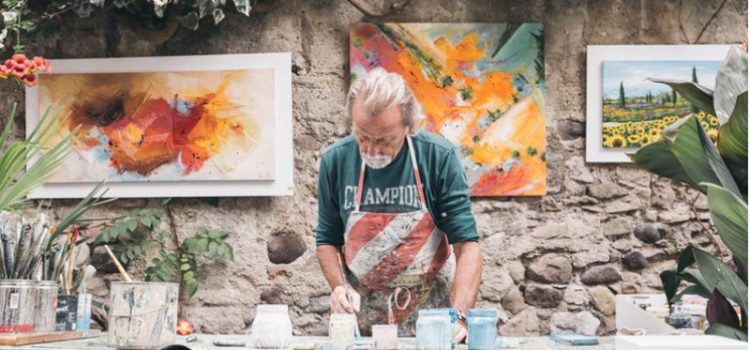

This article is an excerpt from the Shortform book guide to "The Practice" by Seth Godin. Shortform has the world's best summaries and analyses of books you should be reading.
Like this article? Sign up for a free trial here.
What is artistic intent? What should be the purpose behind your artwork?
In The Practice, Seth Godin says that you need a purpose behind your artwork. Artistic intent should involve what and who you’re making work for.
Here’s how to establish your artistic intent to become a better artist.
Establish Your Artistic Intent
In addition to learning to trust yourself, creative work requires that you establish your artistic intent. If art seeks to make a change, then to make art you need to be clear on what change you’re trying to make. Godin argues that to be creative, you need to establish your intent by asking yourself what and who your work is for.
What Is Your Work For?
The first question you need to ask yourself is what your work is for. What purpose do you want it to serve? What change are you trying to make? For example, perhaps you’re trying to challenge a popular misconception, inspire people to be more compassionate, or bring a needed service to an underserved community. Setting an intent helps you focus on what the work needs to serve its purpose, rather than on what you need to assuage your ego (for example, personal gratification or success). It also prevents you from hiding. If you’ve identified where you want to go, it’s easier to ask for directions and listen to people when they tell you how to get there.
Godin advises that you ask the intent question not only about the whole project but also about each element of the project. Ask yourself, “What is this part for?” Everything has to have a function.
(Shortform note: Elizabeth Gilbert disagrees with Godin’s assertion that the purpose of art is to effect change for the better. She says in Big Magic that there’s no requirement that you “save the world” with your art, and in fact, trying to do so can result in you creating art that is pedantic and insufferable. It’s perfectly acceptable to do creative work for whatever reason you want, says Gilbert, including for the simple reason that you enjoy it. (Plus, if you love what you do, you may end up creating something that makes a difference after all.) When it comes to motive for your creative pursuits, Gilbert advises that you do whatever sets your heart on fire, not whatever you think will effect the greatest change in the world.)
Who Is Your Work For?
Godin argues that you need to establish your intent not just about what you’re trying to do but also about who you’re doing it for. In other words, you need to consider your audience. Of course, you can choose to create for yourself alone, but Godin claims that’s not professional work because it’s not serving anyone but yourself. Knowing who your work is for creates a responsibility to bring positive change to those people.
In asking yourself who your work is for, there are a couple of considerations. First, don’t try to appeal to everyone. People who like horror films might not like your romantic comedy, but you’re not making it for them. In fact, one measure of whether work is “good” is simply whether it resonates with the specific audience to whom you’re directing it.
Second, if you’re making something for someone else, you have to truly understand and empathize with what they want and need. For example, if you’re a teacher designing an arts curriculum for a group of underserved kids, you can’t assume that they’ll have the resources to buy lots of expensive art supplies. You’ll need to have an understanding of what materials they do have on hand in their daily lives that could be used to create art projects.
To understand your audience, Godin recommends that you start with a small group of people who care about your work and think about what they want. Be specific. What do they believe? What do they love? What do they need?
This doesn’t mean tailoring your work exclusively to please other people. It means considering the needs of the people who are interested in the work you do because without them, you’d have no audience.
You can’t create art that’s exclusively for others or exclusively for yourself, Godin says. If you try to create something that’s exactly what you want, what you’re really doing is trying to force other people to want what you want or see things through your eyes. You need to empathize with the audience you’re trying to reach.

———End of Preview———
Like what you just read? Read the rest of the world's best book summary and analysis of Seth Godin's "The Practice" at Shortform.
Here's what you'll find in our full The Practice summary:
- Why creativity doesn't require any “magic”
- How creativity is a skill that anybody can learn
- Step-by-step lessons on how to be creative






